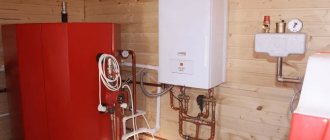You can argue forever about which oven is better - gas or electric, but will it be effective? Everyone has their own preferences, and such issues can only be resolved by comparing all the pros and cons of kitchen appliances. This article will not contain any beliefs, only facts that can influence a person's choice in the matter of equipment. Will a built-in oven be more ergonomic, what are the advantages of using gas or electricity, how to use it safely - all these questions will be discussed in detail.
What is each type of oven?
Housewives regularly use the oven, but most of them do not even think about the principles of its operation. Modern ovens have acquired a lot of functions compared to models of half a century ago, but in general their design has become only slightly more complex.
Any oven is, first of all, a metal cabinet with ventilation holes, inside of which there is a working chamber. The space between the chamber and the cabinet walls is filled with a heat insulator, which helps reduce heat loss and, therefore, energy consumption for heating.
The operation of any oven is based on non-contact heat transfer from the heating element to the product being processed, as a result of which the latter is heated to a temperature of 30 to 250-280°C. The heat source can be heating elements (in the case of electric ovens) or an open flame (in the case of gas-powered ovens). All ovens differ in the number and type of location of the heaters - they can be placed only at the bottom or at the bottom and top of the working chamber, and sometimes also on the back wall, next to the convection fan.
A gas oven runs on flammable gas - mains or bottled. By adjusting the gas flow that enters the burner, you can change the size of the flame. Passing through the burner nozzle, the gas mixes with air. The resulting mixture, after exiting through the side holes of the burner, ignites. The flame is ignited in modern gas ovens using a built-in electric piezo igniter. For normal operation of a gas oven, a constant flow of air is required.
Electric oven.
Gas oven.
When do accidents happen?
Accidents when heating with gas stoves most often occur at night. The reason is that it takes time for the concentration of gas or carbon monoxide in the air to increase to dangerous levels. And it is there when the residents are resting.
That is, in the dark, the likelihood that owners of gas equipment will suspect something is wrong and stop heating is reduced. Or neighbors and random people who happened to be nearby in time will not come to help. This happens quite often. when a gas leak occurs, the presence of which is determined by a characteristic odor.
Gas consumers who violate fire safety rules, especially on a regular basis, need to be aware that they are socially dangerous. Therefore, the legislation allows city gas companies and other gas distribution organizations to immediately terminate service contracts with subsequent cessation of gas supply when it is discovered that homes are being heated using appliances intended for cooking.
This means that by eliminating stove heating at night while all family members are resting, you can significantly reduce the likelihood of an accident, destruction or damage to property. But this is not a panacea, since there are many known incidents that occurred at any other time of the day.
It is also important, if you discover a breakdown of the stove, immediately contact the service organization with which you have an agreement, so that a specialist can promptly detect and repair the breakdown. The use of faulty gas equipment is prohibited by law.
Technical requirements
The most important selection criterion is not your desires, but your capabilities. If the house is not connected to a centralized gas network, then all the talk about the advantages or disadvantages of gas ovens has no meaning for you, since you are essentially deprived of choice. (We will not consider the possibility of operating from a liquefied gas cylinder, since this option is acceptable only in the complete absence of other options.)
There are, however, technical restrictions on the installation of electric ovens. We are talking about a possible discrepancy between the power consumption of the device and the capabilities of the electrical network. Just three or four decades ago, the number of household electrical appliances was not the same as it is now, and their total power consumption is not comparable to today.
Therefore, electrical networks in houses built in the last century are designed for completely different loads. Installing a powerful electrical appliance, such as a modern electric oven, in an old building may require replacing the wiring (however, replacing electrical wiring in a separate apartment does not always solve the problem due to insufficient power of external networks).
When starting to decide which is better - a gas or electric oven, make sure you have the technical capabilities to install both.
Recommendations for use
It is not the user who decides which oven to install, but his capabilities. If the housing does not have a gas main, there is no point in considering the advantages of gas appliances. Installing a stove from a gas cylinder will not be considered, since this is not the most economical and safe option. It is better to use it where there is no other solution, for example in the country.
But not everything is so smooth with electric furnaces. There are limitations here too. It is necessary to take into account the power of electricity coming out of the outlet and the amount of energy consumed by the oven. Therefore, you should be prepared for the fact that in an old house or apartment, local wiring may not be able to handle such a powerful structure.
Before making a choice, you need to carefully familiarize yourself with the technical capabilities of your home and only then choose one or another type of household appliance.
Heating modes for gas and electric ovens
Different foods require different temperatures and heating rates to achieve a given degree of doneness. The more heating modes an oven has, the more varied the list of dishes you can cook.
Inexpensive electric ovens are equipped with upper and lower heating elements (heating elements), which can be turned on separately or simultaneously. Sometimes, under the “ceiling” of the working chamber there is another additional heating element, which at maximum heating becomes red-hot - a grill.
More expensive models, in addition to classic heating modes, also have convection modes. Convection - forced air circulation using a built-in fan to redistribute heated air over the entire area of the oven's working chamber - helps to achieve uniform baking of food on all sides and forget about buns that are burnt on top and raw inside.
Heating of the working chamber in budget gas ovens is unidirectional. The heat here is created only by the gas burner located below. True, despite this, a gas oven, as a rule, exceeds an electric oven in terms of heating speed.
In models of the middle price segment, in addition to this, there is also a grill, which can be either gas or electric (ovens with an electric grill are essentially no longer gas, but gas-electric).
Gas oven with electric grill and convection heating.
A gas grill is more difficult to use, but can significantly improve the taste of the dish. Many manufacturers have begun to equip their gas ovens with convection fans, which provide forced air circulation in the working chamber, which is necessary for quick and uniform heating of the prepared product. There is no heating element around such a fan, as in electric ovens; it simply mixes the air heated by the lower burner.
Electric ovens have more heating modes than gas ovens, although as technology advances, their capabilities are increasingly comparable.
TOP 8 best models
We analyzed customer reviews posted on the websites of the largest and most reliable online stores of household appliances and compiled our rating of the best models in the budget and mid-price segment.
The rating included models with a large number of reviews and an overall rating of 4 stars out of 5. The cost of the equipment was also taken into account.
1 place
MBS DG-607BL
Rating – 5 out of 5.
Price - 24-26 thousand rubles.
2nd place
Beko BIGT21100X
Rating: 4.9 out of 5.
Price – 24,999 rubles.
3rd place
GEFEST DGE 621-01
Rating – 4.7 out of 5.
Price – 14-15 thousand rubles.
Available in black, white and brown.
4th place
Electrolux EOG 92102 CX
Rating – 4.6 out of 5.
Price – 45-50 thousand rubles.
5th place
Bosch HGN22F350
Rating – 4.5 out of 5.
Price – 19-20 thousand rubles.
6th place
DeLonghi SGX 4 RUS
Rating – 4.5 out of 5.
Price – 40-45 thousand rubles.
7th place
Indesit IGW 324 IX
Rating – 4.5 out of 5.
Price – 27-29 thousand rubles.
8th place
Whirlpool AKP 807 IX
Rating – 4.1 out of 5.
Price – 26-30 thousand rubles.
Variety of cooking functions
When comparing the functionality of modern electric and gas ovens, the former significantly benefit. In addition to several basic heating modes, you can often find additional thermal modes (“Gentle defrosting”, “Quick heating”, “Keeping the finished dish warm”, “Simmering”, “Fermentation”, etc.), as well as the ability to cook on steam or combine with microwave.
The smart timer can be programmed to turn on or off at the desired time. The temperature probe not only measures the temperature inside the baked product, but also gives a signal that it is ready. Automatic programs for preparing various dishes built into the memory can turn even an inexperienced housewife into a real chef. It is not surprising that many cooks, even in gasified kitchens, prefer to have an electric oven, which provides greater opportunities for creativity.
The functionality of gas ovens still remains much poorer than the capabilities of their electric “brothers”.
Let's sum it up
The choice of technology is everyone’s business. The differences between an electric oven and a gas oven are quite striking. The first option is characterized by: mobility, efficiency, versatility. For the second - power. The price issue also plays a big role, and here electricity has an advantage. Mobility is also on his side. But if you choose a better gas oven based on installation requirements, then it is better to lean towards this option.
It should be based only on personal preferences and the capabilities of the kitchen. Each housewife has her own requirements that the kitchen must meet. Also one of the important components is the appearance of the oven. It should fit perfectly into the interior and make you want to cook.
Ease of use
Mechanical control of a gas oven does not cause any particular difficulties even for those users who are exclusively at ease with any equipment; it is almost impossible to disable it.
Gas oven controls.
An electric oven can be controlled in two ways - electromechanical or electronic. An electromechanical control unit is simpler and more reliable, while an electronic one provides the user with much more options, making the oven not just a kitchen appliance, but a smart household appliance. It's impossible to say which of these three options is better or worse - it all depends on your personal preferences.
Electromechanical control.
Electronic control.
The main disadvantage of Soviet-era gas ovens was the difficulty of ignition. Having spent a box of matches and still not being able to light a flame, the owner of this miracle sighed heavily, remembering with envy the electric oven he saw at his neighbor’s. Today we are free from such problems. Almost all modern gas ovens are equipped with electric ignition with manual or automatic activation. When you turn the gas supply regulator, an electric spark jumps inside the burner, which ignites the gas. This happens either as a result of you pressing the ignition button, or in automatic mode. Electric ignition allows you to completely forget about matches, which greatly simplifies the use of the oven.
The answer to the question of which is better - a gas or electric oven - in terms of ease of use depends on what you mean by the concept of convenience - accessible simplicity or the maximum introduction of modern technologies.
Procedure for identifying a hazard
If you suspect a concentration of gas or carbon monoxide in your home, a number of actions must be taken.
Namely:
- Turn off the gas stove . Why do you need to turn off the taps?
- Open windows and doors wide to ventilate the room. What can eliminate the danger in a matter of minutes;
- Report the incident to the duty services of Gorgaz (raygaz). Why do you need to dial 104 (04) or 112?
If necessary, other residents and neighbors should be notified and their evacuation organized.
It must be remembered that knowledge of the signs of acute poisoning due to inappropriate use of gas appliances can save the lives of relatives, friends or just neighbors
Knowing the basic signs of CO poisoning can save your life. So, the first of them is a decrease in the speed of psychomotor reactions. Which is often accompanied by a rush of blood to the head. People with heart disease may additionally feel severe tingling sensations, the same as during significant physical activity. Then a headache appears, a pounding in the temples.
All of the listed signs of poisoning should be remembered, if only because if they are promptly identified, the situation can be corrected. If the victim does not take advantage of the chance, then middle-stage poisoning will occur with possible motor paralysis. In which the person will still be conscious, but will no longer be able to do anything, and then a loss of consciousness occurs.
Therefore, if you find victims of carbon monoxide exposure, they must be immediately moved to a safe place. That is, to the fresh air, where you need to remove the person’s restrictive clothes and cover them. This is usually the only thing that can be done before paramedics arrive. Which, by the way, needs to be called immediately.
Where is the quality of baking better - in gas or electric ovens?
It is traditionally believed that open flames are nobler than electric heaters, and that dishes cooked over fire have a special taste and aroma. However, recently the preferences of housewives are clearly on the side of electric ovens. In them, heating elements distributed over the entire area of the device ensure uniform heating of the product from all sides.
In gas ovens, achieving uniform baking is much more difficult. Professionals manage to get good results in gas ovens, but, apparently, this is a consequence of their many years of experience and skill - each gas oven has its own character, usually extremely harmful.
No one will give an objective answer to the question of which oven makes dishes tastier, because taste is an exclusively individual concept. But it is much easier to achieve uniform baking of products and reproducible results in electric ovens.
Reviews
Fans of cooking with gas or electricity give conflicting assessments about the performance of ovens.
- Valery: “We have gas in our house. But I think that finding a place in the kitchen for an electric oven is much easier than for a gas oven. A socket at the bottom and a wire are not the same as connecting a pipe to a gas oven. Of course, a grounded outlet must be installed by a specialist. Without knowing and understanding what’s what, you shouldn’t joke with electricity.”
- Christina: “ I’m used to using a gas oven. You have to wait half an hour for the electric one until it heats up. Our oven is combined with a hob, so there were no problems with installation and connection.”
- Svetlana: “I love electric ovens! I have an oven with delayed start. I put the roast on, set the time, and that’s it! You can mind your own business."
But what reviews exist about a small narrow dishwasher can be found in the article at the link.
It is definitely impossible to make a choice in favor of one oven or another. The advantages of one follow from the disadvantages of the other. It is necessary to take into account the need for preparing family meals, utility costs, and safety for children. Gas ovens have a larger capacity and are more expensive than electric ovens. See also information about glass-ceramic electric stove.
Availability of oven cleaning functions
Popular wisdom says: “If you love to eat delicious food, you also love to clean the oven.” The proverb may not be quoted entirely correctly, but the essence does not change: the walls of the oven must be periodically cleaned of accumulated dirt. It is better to do this after each use, because, firstly, rare cleaning of the cooking area is simply unhygienic, and secondly, fresh dirt is much easier to remove.
Owners of cheap ovens, both electric and gas, will have to clean the walls manually. More and more often there are models with the EcoClear cleaning system: practically no fat sticks to the special “bioceramic” coating of the walls in such ovens, which means the cleaning procedure becomes less labor-intensive.
In more expensive units, manufacturers have provided automatic cleaning. Two methods of self-cleaning oven walls are used - catalytic and pyrolytic. The technology of catalytic decomposition of fat and other contaminants directly during the cooking process using a catalyst applied to the enamel that covers the walls can be implemented in both electric and gas ovens.
Oven with catalytic panels.
But pyrolysis, i.e. burning of food residues at 500°C, is possible only in electric models, since it is almost impossible to heat the walls to the required temperature using a gas burner. The pyrolytic cleaning method is considered the most effective, but the ovens in which it is used are the most expensive.
Oven with pyrolysis cleaning.
Owners of most gas ovens will have to clean the oven chamber manually using a sponge and detergent. Electric ovens have more opportunities to make life easier for their owners.
Threats when heating a room with a stove
It is no coincidence that gas stoves in all relevant documents are called household appliances intended for cooking. This is done in order to clearly define the purpose of the products.
The photo shows the only correct and acceptable option for using a gas stove. Since it is used for cooking, and the gas consumer is nearby and controls the situation in order to avoid the occurrence of dangerous situations. Also, before turning on the device, it would be a good idea to make sure that there is draft in the smoke exhaust system and open the window
In addition, the name indicating the purpose of the device should motivate the user for its intended use. And also serve as a warning, to exclude the possibility of double interpretation of the purpose of the slab. Moreover, both for users and other parties (for example, city gas specialists, lawyers, firefighters, etc.).
If you don’t want to delve into legal complexities, but want to understand the issue, then just remember a few important rules:
- Stoves cannot be used to heat rooms;
- If rule #1 is ignored, the gas consumer becomes a violator of fire safety rules. As a result, they may be subject to administrative or even criminal liability. This is indicated by Art. 38 of Federal Law No. 69-FZ of December 21, 1994 “On Fire Safety”.
And then we’ll talk about unpleasant and dangerous situations that a violator of safety rules can find himself in. These include: fire and explosion hazards, as well as the effects of carbon monoxide on the body.
And each reason that makes gas dangerous should be read in detail.
Threat #1 - Possibility of Fire or Explosion
“Blue” fuel makes life more comfortable, and it is also economically beneficial. But there is also a significant drawback, which is that using gas is a risky procedure. For example, gas causes more accidents than electricity.
You should refrain from heating with a stove not so much for legal reasons, but because there is a high probability of causing significant damage to property. And not only for his own. But the most important thing is that the inappropriate use of gas appliances leads to numerous casualties. Since dozens of Russians die from explosions every year, and cases of suffocation lead to even greater losses
Therefore, stove users should remember that humanity has learned to consume gas relatively safely. But no more than that - the gas easily gets out of control. And this doesn’t require much; for example, an explosion will occur when the gas concentration is an insignificant 5% of the volume of the room, and it often ends with something igniting, which aggravates the situation.
We recommend that you familiarize yourself with the causes of explosions in apartments in more detail.
If the gas concentration is higher (over 15% of the volume), then a fire will occur.
When using gas appliances, you should never be sure of the efficiency of your ventilation system or the reliability of the stove design, as anything can happen. Reliance on statistics can be especially detrimental. For example, thoughts like “...my neighbor has been warming up like this for 3 years now...” or “...my grandmother has been heating her apartment this way all her life...” do not guarantee anything, but they instill relaxation. What leads to negligence and ignoring fire safety requirements
Dangerous gas accumulation in the kitchen and other rooms occurs after the flame on the stove is extinguished without turning off the taps.
This can happen when:
- insufficient air for gas combustion;
- malfunction of the stove, its incorrect operation.
Gas combustion is a reaction in which 9.52 times more air is burned. And this is under ideal conditions. That is, under normal conditions, even more air will be needed (1.1-1.5 times the indicated 9.52). Therefore, during active use of the stove, if the smoke removal systems are ineffective or if there is no removal of combustion products at all, the gas combustion reaction may simply stop. After which the gas will begin to fill the volume of the kitchen and other living spaces.
And although the situation described does not happen often, gas consumers do not need to be too confident in the efficiency of their chimney.
After all, one unfortunate gust of strong wind, precipitation in the form of rain, snow, frost, or fog can lead to sad consequences.
In any of the cases, traction becomes unstable, and in some cases it may disappear altogether. Sometimes reverse currents of air masses occur. What is called reverse thrust.
Owners of new gas appliances equipped with modern protective technologies need to be as careful as people when using them. using “vintage” units. Because the most reliable way to detect a gas leak is a gas leak detector and a person's sense of smell. But smell has never been considered an effective method, and only a few users install sensors
Contamination of the air ducts of the ventilation and smoke removal systems leads to a decrease in draft:
- combustion products;
- foreign particles of dirt and objects.
So, if gas combustion products are removed efficiently today, this does not guarantee anything tomorrow. For example, the presence of draft must be monitored before each time the stove is turned on, even if it is short-term and not intense. And over the course of several hours of active heating, conditions can change dramatically.
In addition to the “classic” option of heating with a gas stove, the Russians have come up with many others. One of them is heating bricks and table salt, which, according to users, should give off heat to the room. Some people find this option safer. But this is not so - when heating bricks, the same destructive processes are launched (reduced air exchange efficiency, formation of carbon monoxide, overheating of equipment) as with conventional heating with a stove
Malfunction of gas stoves and their incorrect operation are also a common cause of dangerous situations.
This is how they are led:
- clogging of burners, nozzles;
- failure of protective systems;
- overheating and other problems.
Often, problems when heating any premises with a gas stove arise due to several interrelated reasons. For example, overheating can cause unauthorized changes to device settings and incorrect operation of systems. As a result, the gas combustion process may be interrupted, without stopping the supply of fuel.
Threat #2 - increasing carbon monoxide concentrations
The most high-profile and well-known gas accidents occur due to explosions and fires, as they are widely known. But carbon monoxide (CO, carbon monoxide) poses an even greater danger.
The reason is that this substance is deadly, even at low concentrations. Thus, when a level of 0.1% of the volume of the room is reached, residents are guaranteed to lose consciousness. And all that remains for them is to hope for outside help. There are many known cases where people, while still conscious and understanding what happened, but due to weakness, were no longer able to eliminate the danger on their own.
And deadly CO poisoning will occur when it reaches a concentration of 0.5%, and within 20 minutes.
It should be remembered that when gas burns, especially when it is actively used, large amounts of carbon monoxide can be released (it should not be confused with the relatively safe carbon dioxide). Even a small amount of which quickly and extremely negatively affects the body
If the carbon monoxide level crosses the 1% mark, it will only take 1 minute to save the victim. That is, he will have almost no chance of salvation, especially considering that at the indicated CO value, people lose consciousness after taking only 2-3 sips of such air.
Carbon monoxide is a product of incomplete combustion of gas. What happens when there is ineffective air exchange when heating a home using a stove. That is, when the capabilities of the smoke removal system were not enough.
Some carbon monoxide is released every time a flame comes into contact with substances whose surface temperatures are lower than that of the gas being burned.
The situation is aggravated by the fact that carbon monoxide is a colorless and odorless substance. Therefore, special devices - carbon monoxide detectors - can detect it.
Using the device shown in the photo, one of the many master “inventors” heats water, which then releases heat. Which, according to the author, is almost a brilliant development. But the use of such devices has more than once led to accidents.
The reason for the danger of CO is that when it enters the body it mixes with hemoglobin and deprives it of the ability to saturate the body with oxygen.
Economic aspect of use
The main disadvantage of electric ovens is their high operating costs. Indeed, in this parameter they are inferior to their gas “brothers”: electricity costs consumers more than main gas. However, many residents of gasified houses and apartments prefer to install electric ovens in their kitchens. What is the reason for such carelessness? Let's try to estimate how expensive it is to use an electric oven.
An oven is still not a hob and is not used every day. Most housewives bake or fry something in it at best once or twice a week, or even less often. The oven power is 2-3 kW, the average cooking time in it is less than 2 hours.
Multiplying all these numbers, we will understand that with today's electricity tariffs, your costs are unlikely to exceed a hundred rubles per month. If gas is paid by meter, the amount of savings will be completely illusory. Whether it’s worth sacrificing convenience for the sake of this savings is up to you to decide.
Using a gas oven is cheaper than using an electric oven. You can estimate the amount of savings yourself, based on the expected frequency of use of the device, as well as the cost of electricity and gas in your region.
Conclusions and useful video on the topic
The information presented in the first video will help you identify signs of carbon monoxide poisoning in a timely manner.
Unfortunately, today there is a lot of information posted online that confuses gas consumers, which is fraught with consequences. An example of this is the following video, where fire safety violators are trying to sell devices that cannot be used.
Heating an apartment or any other room with a gas stove is a dangerous procedure, so it can be argued that in this case the end does not justify the means. It is cheaper, more reliable and more practical to purchase some specialized unit (for example, choose a suitable heater: electric, infrared, micathermic, oil, or make a homemade one). This solution, which is quite safe, will really help improve the comfort of your stay.
Don’t you agree that you can’t use a stove to heat yourself and that this is a rather dangerous activity? Or do you know real examples where people suffered from the misuse of household cooking appliances? Express your opinion in the comments block, ask questions, participate in the discussion.
Safety of use
No freshly baked pies or grilled chicken will be a joy if you are constantly haunted by the thought of the potential danger of the unit with which you prepared them. Which oven is better - electric or gas - from a safety point of view?
Many people strongly associate the word “gas” with the word “danger”. Indeed, a gas leak can lead to fatal consequences such as poisoning of people in the room or an explosion. To minimize the risk, all modern imported ovens operating on gas are necessarily equipped with a “gas control” function: if the flame accidentally goes out (which may be caused by a strong air flow or spilled liquid), the gas supply will be automatically shut off.
In some models, when the fire goes out, the gas supply does not stop, but auto-ignition is triggered. The result for both variations is the same - the likelihood of gas leakage into the room is reduced to nothing. Safety depends not only on the design of the oven, but also on the correct connection to the gas main: this work should only be performed by a specialist.
Let us also remind you that during the operation of a gas oven, combustion products are released, including carbon monoxide. To prevent it from accumulating indoors in concentrations dangerous to human health, you should ensure good air circulation and at the same time purchase a hood along with the oven.
On the other hand, electric ovens also pose a certain danger - this is the possibility of fire due to overheating, and the risk of electric shock to the user. To prevent the risk of fire in furniture and other objects located in the immediate vicinity of the oven, temperature sensors are installed on its outer walls. When the walls heat above a specified limit (usually 90°C), they turn off the power supply to the device. In addition to this, tangential cooling is used - blowing cold air onto the outer walls of the oven.
A protective shutdown will help protect a person from electric shock: if a malfunction occurs, the electronics will de-energize the device. It should be remembered that the safety of using an electric oven depends not only on the manufacturer of the equipment, but also on the correct connection to the electrical network. If you do not know what power consumption, wire size, grounding, etc. are, then do not do it yourself, but seek help from a professional electrician.
The explosion and fire hazard of gas ovens is higher than that of electric ovens. However, it should be understood that safety depends primarily on compliance with the rules of installation and operation, i.e. on you.
What does GOST and the instructions for the stove say?
To understand the suitability of a gas stove for heating, it is enough to immediately familiarize yourself with the contents of the operating instructions after connecting the device.
Is the specified document lost or are you just too lazy to look for it and delve into the necessary wording? Then you can not waste time and simply trust the norms and requirements set out in the relevant GOST 33998-2016. Where in section 8 it is said that each instruction supplied with a household gas stove must contain a warning indicating that it is prohibited from being used for heating.
Using a gas stove for any purpose other than cooking is considered a violation of safety precautions. Moreover, any exceptions or double interpretations in this matter are not allowed. As evidenced by the fact that today stoves are officially called cooking appliances
The corresponding inscription must be highlighted and begin with the word “ATTENTION!” . Moreover, large letters and the presence of an exclamation mark are not an accident. Since the test must be exactly like this, otherwise it will be a violation of the law.
In addition, in accordance with the requirements set out in the above GOST, on the body of each new gas stove produced or brought to the Russian Federation there must be at least one sign with a warning text similar to that indicated above.
If the gas stove is old, for example, still Soviet, then its instructions may well lack information indicating that heating with it is prohibited. But owners of such devices should know that this feature does not change anything and they still cannot heat themselves with the stove.
It should be remembered that the oven and grill built into the stove are also considered devices intended for cooking. Therefore, they should also not be used for heating or performing any other tasks.
Modern gas stoves are divided into various subtypes and also have additional functions. Which in some cases can lead to confusion and ambiguous interpretation of the terms used in specialized documents.
To avoid confusion in wording, since the entry into force of GOST 33998-2016, all types of gas stoves are called cooking appliances.
What is true about:
- built-in hobs;
- free-standing hobs;
- tabletop stoves;
- built-in and free-standing slabs.
The same status as stoves is given to products such as a built-in grill and a built-in oven. In addition, it is prohibited to use a free-standing gas grill for heating.
That is, there are no exceptions and stoves, like other appliances classified in the same category, can be used exclusively for cooking. By the way, it is prohibited not only to heat rooms, but also to use such devices to solve any other problems.
Device price
Prices for any household appliance depend on the technical characteristics, functionality, energy efficiency, ease of use, attractive appearance, as well as the novelty and popularity of a particular model and, of course, the prestige of the brand.
It would seem that gas ovens should be significantly cheaper than electric ones, because they benefit only in terms of secondary operating costs, in this case the cost of the energy source. However, in practice, we observe the opposite: the average gas oven costs about one and a half times more than an electric oven with similar functionality. Apparently, in this case, the factor of lesser representation on the market is affected: there are an order of magnitude less gas ones produced than electric ones.
With equal or even superior capabilities, electric ovens are cheaper than gas ovens.
Connection rules and steps
The main rule of installation work aimed at connecting household appliances to gas and electricity supply lines is to involve specialists in this matter - representatives of the gas service, electricians.
It is useful for the user to understand how a gas stove with an electric oven is connected to the networks, but in practice this task should only be solved by specialists - service workers who have the appropriate clearance.
Engaging specialists who are authorized representatives of local gas services to connect a household gas hybrid stove is one of the established rules that require mandatory compliance
Each model of gas (combined) stove has technical documentation, which indicates the characteristics of the gas and electrical networks for connection.
Accordingly, resource network lines connected to the equipment installation site must comply with the specified technical characteristics of the equipment.
In particular, we mean the following characteristics:
- gas pressure;
- gas type;
- voltage of the electrical network.
The gas combination stove is supplied for sale, configured for use with natural gas “H”, “E”, supplied at a pressure of 13-20 mbar. Or an installation for the use of liquefied gas at a pressure of 20 mbar can be used. This information can usually be seen if you open the oven door, on the upper or lower end of the body.
Stage #1 - connecting the gas line
Like most classic models, the combined design of the gas stove is equipped with an R ½ nozzle (extended threaded tube). The connection to the main gas line is made using a flexible hose, specially certified for use on a gas stove.
Variations for connecting a gas hybrid stove through a flexible special hose with a centralized supply of natural gas: A – unacceptable option in terms of level relative to the pipe; B, C, D – permissible connection variations
When installing a gas stove with an electric oven and connecting it to the gas pipeline line, the flexible connecting hose should be placed in such a way that there is no contact of the hose body with any part of the stove body.
After completing the connection, it is necessary to conduct a leak test at the joining points.
Additional design of the gas connection point, intended for a liquefied product: 1 – gas stove pipe; 2 – fitting for hose connection; 3 – sealing gasket; 4 – nozzle R ½
Also in the case of a flexible hose connection, the level matching rule must be taken into account. In particular, it is not allowed to raise the body of the flexible hose to the level of the entry point of the nozzle with the R ½ nozzle or above this level. True, if a rigid metal pipe is used for connection, the rule of levels is excluded.
Stage #2 - connecting the electrical line
The location of the electrical connection terminal is the rear wall of the gas (hybrid) stove housing. Typically, the terminals are hidden inside an insulated housing that has a circuit cover.
The box cover can be removed easily - just press the latch with a screwdriver and then push it up. The terminal configuration opens, where the supply cable conductors are connected.
An example of the electrical connection configuration that is widespread in the designs of household hybrid stoves. Terminals L1, L2 are energized. Terminals N and PE – neutral and ground
The connection of the power cable conductors should be carried out according to the markings indicated on the terminal base or on the documentation diagram. In this case, it is necessary to comply with the parameters of the electrical network used - using the correct connection configuration.
Typically, the following color combination of conductors is used on the network cables of combined home ranges:
- Voltage lines (L1, L2, L3) – black, black, brown.
- The neutral line is blue.
- Protective earth (PE) – green-yellow.
After making the connections, the cable body inside the terminal box must be secured, thus preventing possible stretching and breakage. Then close the box lid tightly.
We should also not forget about the need for regular maintenance and performance testing of gas-using equipment. Why do you need to enter into an agreement with the gas company?
Final comparison of gas and electric ovens
| Electric ovens | Gas ovens | |||||||
| Technical requirements | An electrical network is sufficient, but it must be designed for a certain load. | Mains gas is required. | ||||||
| Heating modes | A large number of modes. | They have a small number of heating modes. | ||||||
| Variety of cooking functions | A huge number of culinary functions. | The number of culinary functions is small. | ||||||
| Ease of use | A little more comfortable. | Less convenient. | ||||||
| Where is the best quality of baking? | It’s easier to achieve even baking. | Quality baking requires skill and getting used to a certain model. | ||||||
| Availability of oven cleaning functions | They have great automatic cleaning capabilities. | Typically, only the traditional cleaning method is available. | ||||||
| Economic aspect of use | It costs more to use. | It costs less to use. | ||||||
| Safety of use | Security at a higher level, subject to all rules and regulations. | Explosion and fire hazards are higher. | ||||||
| Device price | Cheaper. | Expensive. | ||||||
If you notice an error, a non-working video or link, please select a piece of text and press Ctrl+Enter .
0
Types of penalties for heating with stoves
Our country periodically experiences all sorts of crises and disasters, which affects the quality of service. As a result, ordinary people have come up with a lot of options for using gas stoves for other purposes.
For example, stoves are used not only for heating air, but also for heating bricks, salt in the oven, and other things. All of these devices are then moved to living quarters and used to increase the temperature. You can also get information about a method such as heating a large container of water to a boil. After which the gas is turned off, and the water gives off heat to the air in the living room for a long time.
Incorrect use of a gas stove. Immediately after receiving the relevant information upon receiving a message about such a violation, for example, after a neighbor calls the gas service, a procedure can be initiated to disconnect the consumer from the centralized gas supply system
Don't deceive yourself and risk your lives. Since there are no completely safe options for heating a room using a stove. The reason is that it is not gas that causes accidents, but ignorance of safe use rules. Consumers simply leave the stoves without control (which in itself is prohibited), forget about them, and fall asleep. Which leads to incidents.
This feature has been taken into account by legislators, therefore any method of heating is considered prohibited, since this is not the intended use of the stove.
Violators of fire safety measures should remember that the law provides for various fines for their actions. For example, the Code of Administrative Offenses has more than a dozen articles under which sanctions may be imposed on them.
But the most severe types of punishment for heating with stoves and its consequences are prescribed in the domestic Criminal Code. Thus, Article 168 of which states that for a violation that led to damage to property, sanctions may be imposed in the form of a fine of up to 120 thousand rubles. In addition, the offender is allowed to restrict his freedom for a period of one year.
And in Art. 219 of the Criminal Code of the Russian Federation talks about penalties for violating fire safety measures that cause harm to human health. For such an act, a large fine is provided (up to 80 thousand rubles), and, if the case is serious, then the person who likes to warm himself with a stove may be deprived of his freedom. And not for the shortest period of time (up to 3 years). When the actions of a violator lead to the death of people, he may be subject to many years of forced labor (up to 5 years) or imprisoned for an impressive period (up to 7 years).
Recommendations when choosing a device
Which oven for the kitchen should you choose, an inexpensive electric one or a gas one, and which is better to buy? Consumers focus on the type of fuel and the convenience of connecting to central or autonomous highways. Experts note the following points of choice:
- If there is no gas supply in the kitchen, choose an electrical appliance.
- Electrical devices are suitable for budget-conscious owners.
- The cost of gas models does not include the cost of installing a hood.
- It is better to cook dough products using electrical equipment; meat is tastier when cooked over an open fire.
- Electric ovens are easier to install than gas ovens.
- To avoid spending money on additional equipment, purchase multifunctional ovens with a spit, grill or defrost.
- Gas ovens with many options are more expensive due to the complexity of the mechanisms for implementing the functions.
- For families with children, it is advisable to purchase a dependent electric oven with a door lock.
- An electric oven 45 cm wide can fit into a small kitchen.
Watch a video comparing ovens










